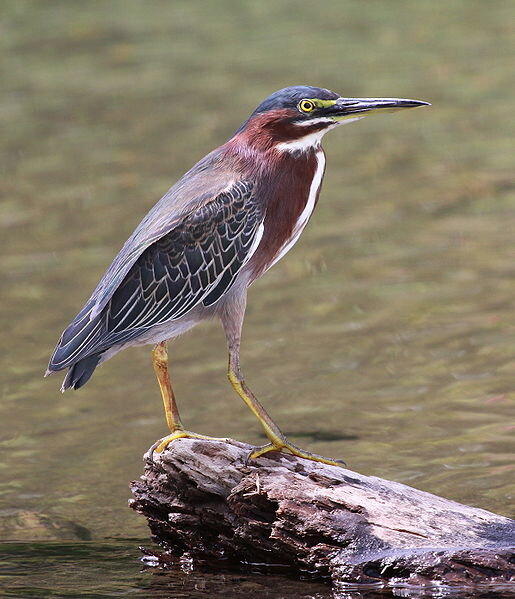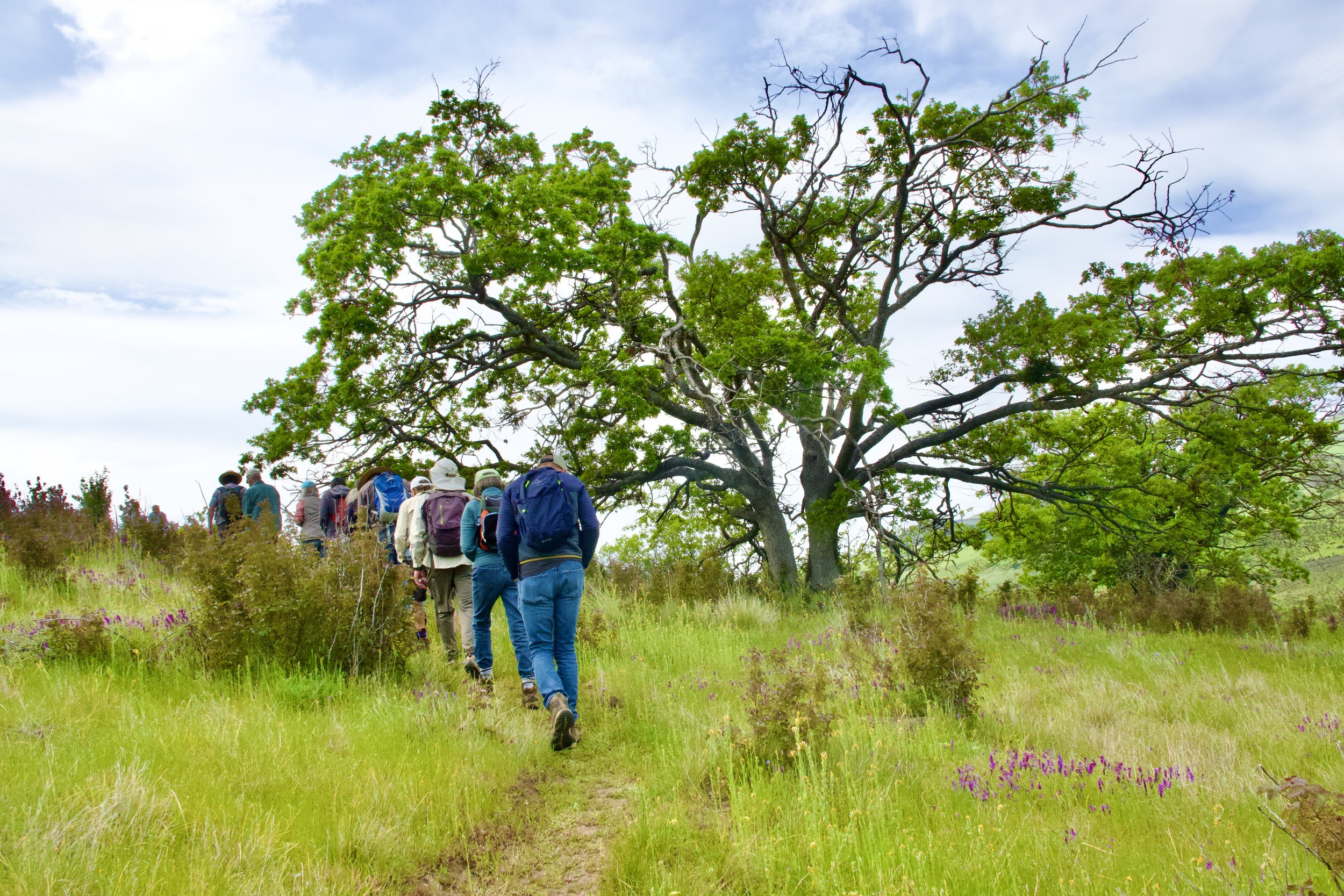
Coho Salmon
Coho salmon, an endangered species, prefer quiet waters like sloughs and seasonal streams rather than the larger, busier river. The fry (young fish) live in pools with dragonfly and damselfly larvae and tree frogs, and are eaten by nonnative bullfrogs, bigger fish, birds, and raccoons. Adult fish are also eaten by Bald Eagles, black bears, and other animals.
Photo by Cacophony, CC BY-SA 3.0

Willow
Willow is a fast-growing tree with soft bark and a preference for wet soil. Elk browse on willow leaves and beavers eat the plant's inner bark. Because willow grows near water, it provides cover and a nesting site for many songbirds, shorebirds, and waterfowl, including Yellow Warblers, Wood Ducks, and Green Heron.
Photo by Tara Laidlaw

Western Pond Turtle
Western pond turtles live in places with access to both aquatic (water) and terrestrial (land) habitats. They prefer bodies of water that have boulders or downed logs where the turtles can bask in the sun. As juveniles, these reptiles eat mostly aquatic invertebrates, but as they get older they begin to eat aquatic plants as well. Although their hard shell protects them from many predators, turtles are preyed upon by large birds like Bald Eagles and mammals such as coyotes and raccoons.
Photo by Oregon Department of Fish and Wildlife, CC BY-SA 2.0

Torrent Sedge
The dense root systems of torrent sedge plants create living walls along the edges of rivers, helping to slow and cool the water while also providing habitat for fish, macroinvertebrates, and other aquatic animals. The plants themselves are also a food source for animals that live near the water, like ducks and beavers. Sedges often grow alongside rushes in wetland and riparian ecosystems.
Photo by Evelyn Simak, CC BY-SA 2.0

Wood Duck
Wood Ducks thrive in a wide range of freshwater habitats, including in marshes, along creeks and rivers, and in beaver ponds. They prefer areas with a mix of plant cover, provided by downed trees or shrubs like willow, and open water. Wood Ducks mostly feed in the water by taking short, shallow dives to find aquatic plants and invertebrates, but they will come onto land and eat acorns and other nuts and seeds if necessary.
Photo from Pixabay

Green Heron
Green Herons always live nearby to water, and most of their diet is small fish that they catch while foraging in shallow water with thick plant life. However, they also eat insects, amphibians, rodents, and more. They build their nests in many different kinds of plants, including pine, oak, and willow.
Photo by Basar, CC BY-SA 3.0

Oregon Ash
Oregon ash trees prefer to grow in areas with wet soil, where their shallow but wide-spreading roots keep them stable even during periods of flooding. Small birds, waterfowl (like ducks), and squirrels eat the seeds of Oregon ash trees, while deer and elk graze on its leaves.
Photo by Emoke Denes, CC BY-SA 4.0

Beaver
Beavers are herbivores, eating the bark of willow, aspen, and other trees that grow in riparian zones in addition to aquatic plants. They also use these trees to make dams, which serve as the beavers' homes and which create ponds where other aquatic wildlife can live.
Photo from Pixabay

Spreading Rush
Spreading rush is a grass-like plant that spreads by rhizomes, which are stems that grow horizontally underground or underwater. This rush grows along the edges of rivers and in wetlands, where its roots and rhizomes create habitat for organisms such as macroinvertebrates and small fish, and it is often found growing with sedges. Mammals such as beavers and deer eat rush shoots, and small birds eat rush seeds.
Photo by Christian Fischer, CC BY-SA 3.0

Chinook Salmon
Salmon travel inland in the Rogue River all the way from the Pacific Ocean. Adult Chinook salmon breed and make redds (nests) in the main stem of the Rogue River, and the young fish take shelter in the sloughs. These fish face predation from birds like Bald Eagles and Osprey, and from mammals like black bears.
Photo by Josh Larios, CC BY-SA 2.0

Yellow Warbler
Yellow Warblers are migratory birds who prefer to spend their breeding season alongside rivers and wetlands. They build their nests in the forks of willow and other bushes and small trees, and they like to forage for their food in the same kinds of plants. These little songbirds eat caterpillars, damselflies, and other bugs, which they pick off of branches or catch in short flights.
Photo by Becky Matsubara, CC BY 2.0

Vivid Dancer Damselfly
Like other damselfly species, Vivid Dancers lay their eggs just below the surface of the water on aquatic plants like sedges and rushes. Immediately after hatching, these macroinvertebrates live underwater, where they are preyed upon by many animals including turtles, ducks, and fish. When they are ready to emerge as adults, they climb up a plant's stem, shed their exoskeleton, and begin to fly. As adults, Vivid Dancers are hunted mostly by small birds.
Photo by siamesepuppy, CC BY 2.0






















